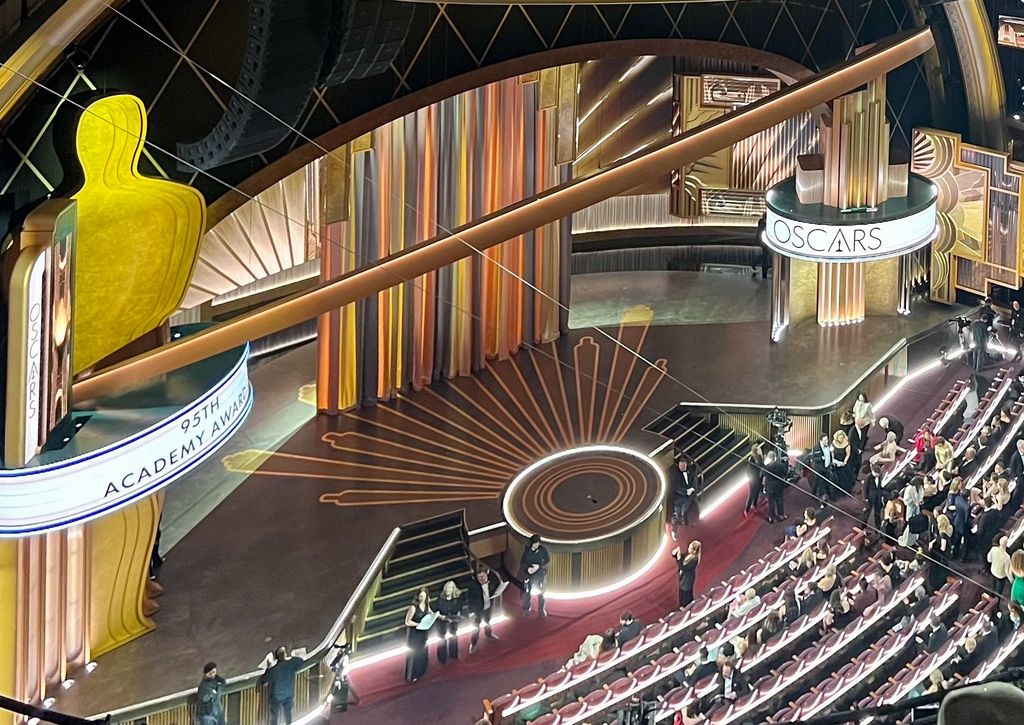
The Academy Awards, universally recognized as the Oscars, stand as the pinnacle of cinematic achievement, a globally televised spectacle steeped in nearly a century of tradition and meticulous regulation. Far more than just a night of glittering gowns and emotional acceptance speeches, the Oscars are underpinned by a complex tapestry of rules and evolving practices meticulously crafted by the Academy of Motion Picture Arts and Sciences (AMPAS). These guidelines dictate everything from a film’s initial eligibility to the very moment a winner’s name is revealed, ensuring a system that, while constantly adapting, strives for fairness and distinction.
For those watching from home, the ceremony itself is a carefully choreographed event, but the journey to the red carpet is paved with intricate stipulations that many might not fully appreciate. These aren’t just arbitrary decrees; they are responses to historical events, technological advancements, and a continuous effort to maintain the prestige and integrity of the awards. Understanding these behind-the-scenes mechanics offers a deeper appreciation for the immense effort and precise adherence required to participate in Hollywood’s most celebrated annual event.
From the earliest days of silent announcements to the digital screening rooms of today, the Academy has consistently refined its operational framework. This exploration delves into the essential rules and significant procedural shifts that define the Oscars, offering a comprehensive look at the ‘why’ and ‘how’ behind some of the most enduring practices and critical changes that have shaped these esteemed awards over the decades.

1. **The Evolution of Secrecy: Embracing the Sealed Envelope Tradition**One of the most iconic and enduring images of the Academy Awards ceremony is the presenter dramatically tearing open a sealed envelope to reveal the name of the winner. This practice, now synonymous with Oscar night suspense, was not a founding tradition but rather a crucial innovation born out of necessity in 1941. Prior to this, the results were not shrouded in such elaborate secrecy, leading to a rather embarrassing incident that forced the Academy’s hand.
During the first ceremony in 1929, winners were actually announced to the media three months in advance, completely nullifying any element of surprise. For the second ceremony in 1930 and throughout the remainder of the first decade, results were provided to newspapers for publication at 11:00 p.m. on the night of the awards, an attempt to manage the reveal without giving away the moment entirely. However, this system proved vulnerable to premature disclosure, which eventually necessitated a more robust solution to maintain the drama.
That solution arrived in 1940 when the Los Angeles Times infamously jumped the gun and announced the winners before the ceremony even began. This breach of trust and the resulting embarrassment for the Academy led to an immediate and decisive change. In response, from 1941 onwards, the Academy adopted the now-famous sealed envelope system. This procedural rule ensures that the names of the winners remain a closely guarded secret until they are announced live on stage, preserving the suspense that has become a hallmark of the Oscars telecast.

2. **Film Eligibility: The Paramount Los Angeles County Theatrical Run**At the heart of any award system are the criteria that define what is eligible for consideration, and for the Oscars, these rules are remarkably specific and geographically focused. According to Rules 2 and 3 of the official Academy Awards Regulations, a film must have a qualifying theatrical release in Los Angeles County, California. This is not a mere suggestion but a strict prerequisite for nearly all major categories, setting the stage for what films can even dream of an Oscar statuette.
To qualify, a film must open in the previous calendar year, specifically from midnight at the start of January 1 to midnight at the end of December 31. Furthermore, this qualifying run must consist of seven consecutive days of exhibition. The rules stipulate that the film must be shown at least three times on each of these seven days, with at least one of these daily screenings starting between 6 p.m. and 10 p.m. local time. These precise stipulations ensure that a film has had a bona fide public exhibition within the specified timeframe and location.
This geographical and temporal specificity can sometimes lead to situations where films are released earlier but only qualify for a later awards cycle. A notable example is the 2009 Best Picture winner, *The Hurt Locker*. Although initially released in 2008, it did not fulfill its Oscar-qualifying theatrical run in Los Angeles until mid-2009. Consequently, it was deemed eligible for the 2009 awards, highlighting how these detailed rules can impact a film’s awards season trajectory and distribution strategy.

3. **Defining a Feature Film: Length and Technical Standards for Qualification**Beyond the theatrical release requirements, the Academy also sets clear definitions for what constitutes a ‘feature-length’ film, along with specific technical standards that must be met. These criteria, outlined in Rule 2, are designed to ensure a certain level of production quality and artistic ambition, differentiating eligible works from shorter projects or those not meeting modern exhibition standards. Such definitions are fundamental to maintaining the prestige of the awards, particularly for categories recognizing comprehensive cinematic achievement.
A film is officially defined as feature-length if it has a minimum running time of 40 minutes. This threshold helps distinguish it from short-subject films, which have their own dedicated categories and eligibility rules. This clear distinction prevents shorter works from competing in categories intended for more expansive narrative or documentary forms, ensuring a fair playing field within each designated award type.
Furthermore, the Academy mandates specific technical formats for eligible films. A qualifying film must exist either on a 35 mm or 70 mm film print, or in a 24 frame/s or 48 frame/s progressive scan digital cinema format. Crucially, digital submissions must also meet a minimum projector resolution of 2,048 by 1,080 pixels. These technical specifications reflect the industry’s evolution while maintaining high standards for the cinematic experience, ensuring that films considered for an Oscar are presented in formats suitable for professional theatrical exhibition.

4. **Evolving Nomination Practices for Performers: From Multiple Works to Individual Recognition**The method by which performers are nominated for Academy Awards has seen significant evolution since the earliest ceremonies, reflecting a continuous refinement of how individual artistic contributions are recognized. The initial approach to nominating actors and actresses was notably broader, allowing for a single nomination to encompass multiple works within a qualifying period. However, this system quickly proved to be less focused than the Academy desired.
For the very first Awards, winners were recognized for their cumulative performances across several films during the specified eligibility period. For instance, Emil Jannings received the first Best Actor award for his roles in two films, *The Last Command* and *The Way of All Flesh*. Similarly, Janet Gaynor won the first Best Actress award for her performances in three different films. This broad recognition acknowledged a body of work, rather than a single standout performance.
Recognizing the need for a more specific and granular approach to judging individual artistic merit, the Academy swiftly changed this rule. Beginning with the second ceremony, performers began to receive separate nominations for individual films. This fundamental shift meant that each nominated performance was considered on its own merits, rather than as part of a collective effort across multiple projects. Consequently, no performer has received multiple nominations in the same category since the 3rd Academy Awards, solidifying the focus on distinct, singular achievements within a given year.

5. **The Academy’s Strict Rules on Campaigning: Preserving Dignity and Fair Play**The glitz and glamour of Oscar night often overshadow the intense campaigning that precedes it, a period when film companies invest millions to sway Academy voters. To ensure that this crucial phase remains dignified and fair, the Academy has instituted rigorous rules designed to limit overt campaigning and prevent the process from becoming undignified. These regulations are enforced by an internal ‘awards czar’ who advises members and imposes penalties on offenders, underscoring the Academy’s commitment to ethical conduct.
The Academy’s guidelines aim to strike a delicate balance between legitimate promotion and excessive, potentially manipulative, lobbying. The intent is to prevent a scenario where financial power dictates artistic recognition, thereby safeguarding the integrity of the voting process. Members are expected to adhere to these rules, understanding that their actions can have direct consequences for themselves and the films they represent, ensuring that merit, not marketing muscle, is the primary driver of success.
A stark illustration of these rules in action occurred during the 2009 awards season. A producer of the Best Picture nominee *The Hurt Locker* was disqualified from the category due to contacting associates and urging them to vote for his film over another perceived front-runner. Despite this producer’s disqualification, *The Hurt Locker* ultimately went on to win Best Picture, demonstrating the Academy’s resolve to enforce its rules even when a film is a strong contender. This incident served as a powerful reminder of the Academy’s seriousness in maintaining the sanctity of its voting procedures.

6. **Ownership and Resale Limitations of the Oscar Statuette: The $1 Buyback Rule**The iconic Oscar statuette, while representing the pinnacle of achievement, is not entirely the personal property of its recipient, especially for those awarded since 1950. A significant and often surprising rule governs the ownership and potential resale of these coveted awards, a measure implemented by the Academy to protect the statuette’s legacy and prevent its commercialization. This unique stipulation creates a legal encumbrance that binds every modern Oscar winner.
Prior to 1950, Oscar statuettes were considered, and remained, the unconditional property of the recipient, free to be sold or transferred as they wished. This freedom, however, began to change how the Academy viewed the sanctity of its awards. Concerns grew about statuettes appearing in public auctions, potentially diminishing their symbolic value and transforming them into mere commodities. To address this, a new legal requirement was put into place.
Since 1950, all Oscar statuettes have been legally encumbered by a specific contractual stipulation: if a winner or their heirs ever wish to sell their statuette, they must first offer it back to the Academy for the nominal sum of $1. If the winner refuses to agree to this condition, the Academy retains ownership of the statuette entirely, effectively preventing them from receiving the physical award. This rule ensures that the Academy can preserve its history and control the circulation of its most valuable symbols, reinforcing that an Oscar is primarily an honor, not a tangible asset for profit.
This rule has led to various legal battles and controversies, particularly concerning statuettes awarded before 1950, which are exempt from the buyback clause. These older awards have commanded substantial sums in public auctions and private deals, as evidenced by the sale of Orson Welles’ 1941 Oscar for *Citizen Kane* for over $860,000 in 2011 after his heirs won a court decision contending he did not sign any agreement to return it. Some buyers of these pre-1950 statuettes have, commendably, chosen to return them to the Academy’s treasury, ensuring their preservation for historical purposes.” , “_words_section1”: “1994
Having established the foundational mechanics of film eligibility and award integrity, we now pivot our focus to the nuanced requirements governing specific categories, the Academy’s embrace of technological advancements in its voting processes, and the continually refined protocols that shape the live telecast itself, including vital limitations on on-stage conduct and speech durations. These areas reveal how the Oscars adapt to industry changes and uphold their status as a premier global event.

7. **Specialized Eligibility for International Feature Films**While general film eligibility rules are stringent, the Academy recognizes the distinct nature of global cinema, establishing specific criteria for the Best International Feature Film category. This category has evolved significantly, initially introduced as a special award at the 20th Academy Awards and becoming a competitive category at the 29th, underscoring the Academy’s commitment to recognizing diverse cinematic achievements from around the world.
A key differentiator for this category, as outlined in the Academy’s rules, is that it does not mandate a U.S. theatrical release to qualify. Instead, the film must be submitted as its country’s official selection, a process that ensures each nation puts forth its strongest contender. This approach highlights national cinematic representation rather than commercial distribution reach within the United States.
Furthermore, a fundamental requirement for films submitted in the Best International Feature Film category is the inclusion of English subtitles. This ensures accessibility for the Academy’s diverse voting membership, allowing them to fully appreciate the narrative and artistic merit regardless of the film’s original language, facilitating a fair and thorough assessment.
Read more about: Academy’s Crossroads: Unpacking the Oscar Eligibility Debates and Rule Evolutions for the Modern Film Era

8. **The Strict Rules for Documentary Feature Eligibility**The path to an Oscar nomination for documentary features involves a distinct set of rules designed to ensure both artistic merit and broad public exhibition. Unlike many other categories, the Best Documentary Feature award offers multiple qualification routes, reflecting the varied distribution realities of non-fiction filmmaking while maintaining rigorous standards.
Films can qualify through traditional theatrical runs, requiring week-long exhibitions in both Los Angeles County and any of the five boroughs of New York City during the previous calendar year. Alternatively, a film can qualify by winning a specified award at one of the competitive film festivals listed on the Academy’s Documentary Feature Qualifying Festival list, making festival success a direct pathway to eligibility, irrespective of public exhibition. Additionally, submission in the International Feature Film category as its country’s official selection also provides a route for qualification.
Beyond these paths, films aspiring for a Documentary Feature Oscar must also meet a specific critical reception criterion: they must have been reviewed by a critic from prominent publications such such as *The New York Times*, *Time Out New York*, the *Los Angeles Times*, or *LA Weekly*. This ensures that films considered for this prestigious award have garnered significant critical attention. Moreover, since the 90th Academy Awards in 2018, multi-part and limited series have been rendered ineligible for this award, a rule change that followed the win of an eight-hour presentation that had a limited theatrical release before being broadcast in multiple parts, indicating the Academy’s intent to focus on standalone feature-length works.

9. **Unique Qualification Paths for Short Film Categories**The Academy’s rules for short-subject awards—encompassing Best Documentary Short Subject, Best Animated Short Film, and Best Live Action Short Film—are uniquely tailored to accommodate the distinct production and distribution models of shorter cinematic works. These categories operate under a separate framework to ensure a fair and appropriate evaluation.
Crucially, the qualifying period for short films does not align with the standard calendar year; instead, it covers one year starting on October 1 and concluding on September 30 of the calendar year preceding the ceremony. This adjusted timeline allows for a more continuous flow of submissions throughout the year. Films can qualify through a week-long theatrical release in either New York City or Los Angeles County during this specific eligibility period.
Adding further flexibility, short films can also achieve eligibility by winning specified awards at one of several competitive film festivals designated by the Academy, eliminating the need for a prior public distribution. A unique pathway exists for winners of the immediately previous Student Academy Awards: gold, silver, or bronze medalists in appropriate categories automatically become eligible for the corresponding Oscar short-subject awards, fostering emerging talent. For qualifying theatrical runs, the requirements are notably less stringent than for feature films, demanding only one screening per day, with specific start times only for documentary shorts, allowing for easier exhibition and broader access.

10. **Modernizing the Vote: The Shift to Online Balloting and Viewing Requirements**The Academy has consistently evolved its voting processes to enhance efficiency, security, and member engagement, reflecting broader technological shifts within the industry. A significant leap occurred in 2013 with the implementation of an online system for Oscar voting, marking a decisive move away from traditional mailed paper ballots. This modernization streamlined the voting experience for its thousands of members, making the process more accessible and immediate.
To further support this digital shift, the Academy introduced the Academy Screening Room in 2019, a secure streaming platform designed exclusively for voting members. This platform allows members to view all eligible films in one centralized, protected location, enhancing convenience and ensuring uniform access. Distributors must pay a fee and provide a digital copy for inclusion, which is then forensically watermarked to prevent piracy and unauthorized sharing, maintaining the integrity of the screening process.
The impact of the COVID-19 pandemic accelerated this digital transformation. For the 2022 Oscars, the Academy took the unprecedented step of banning all physical screeners and in-person screenings, effectively making the Academy Screening Room the sole official method for members to view eligible films. This move underscored the Academy’s commitment to adapting to challenging circumstances while ensuring the continuity and fairness of the voting process, allowing for widespread participation regardless of geographical constraints.
Most recently, a newly announced procedure for 2025 further tightens the voting protocols. This rule mandates that Academy members must view all nominated films within a specific category to be eligible to cast a vote in the final round for that category. The verification of viewing will be primarily done through the Academy Screening Room’s digital tracking, with a supplemental form for films viewed at in-person events like festivals or private screenings, reinforcing a commitment to informed and comprehensive decision-making by voters.

11. **The Evolution of the Telecast Schedule: Strategic Timing Shifts**The timing of the Academy Awards ceremony is far from arbitrary; it is a carefully calibrated decision influenced by factors ranging from industry lobbying to television ratings and even religious holidays. Over the decades, the Academy has frequently adjusted its telecast schedule to optimize viewership and minimize external conflicts, demonstrating a strategic approach to maintaining the show’s prominence.
Initially, the ceremony often took place in late March or early April. However, in 2004, the Academy strategically moved the ceremonies up to late February. This shift was motivated by a dual purpose: to disrupt and shorten the intense lobbying and advertising campaigns characteristic of Oscar season, and to avoid direct competition with the burgeoning television ratings success of the NCAA Division I men’s basketball tournament, which historically drew audiences away from the Oscars. The earlier date also provided a distinct advantage for broadcaster ABC, as it typically falls within the highly profitable and important February sweeps period, maximizing advertising revenue.
Further adjustments continued, with the ceremony moving from weekdays to Sundays starting with the 1999 event. The reasons cited for this change included the expectation of higher viewership on Sundays, the desire to avoid Los Angeles rush-hour traffic jams, and an earlier start time to accommodate East Coast viewers. While the Academy contemplated moving the ceremony even earlier to January in 2010 to combat “viewer fatigue” with the long awards season, concerns about dramatically shortening the voting period and clashing with National Football League playoff games ultimately led to this idea being shelved.
More recent changes include the announcement in 2018 to move the ceremony to mid-February starting with the 92nd Academy Awards in 2020. The 2024 ceremony saw an even earlier start time of 4:00 p.m. PT/7:00 p.m. ET, primarily to allow ABC to air a half-hour of primetime programming as a lead-out. These strategic maneuvers also often consider avoiding proximity to major religious holidays like Passover and Easter, which have historically been a grievance for members and the general public, showcasing the Academy’s responsiveness to various stakeholder concerns.

12. **The 45-Second Rule and Speech Streamlining**One of the perennial challenges of a live, globally televised event like the Oscars is managing the length and flow of the ceremony, particularly the acceptance speeches. The Academy has implemented explicit rules and creative solutions to address what organizers once termed “the single most hated thing on the show”—overly long and emotional displays at the podium. These efforts reflect a continuous drive to keep the telecast engaging and respectful of audience time.
A landmark decision came in 2010 when the Academy announced a strict rule limiting winners’ acceptance speeches to a maximum of 45 seconds. This clear directive aimed to prevent the protracted speeches that had often disrupted the ceremony’s pace and, at times, led to uncomfortable or rambling moments. The rule immediately placed a premium on concise and impactful expressions of gratitude.
To further assist winners and streamline the experience, the Academy introduced an on-screen ticker in 2016. This innovation allowed winners to list their dedications and thank-yous, ensuring that important acknowledgments were still conveyed to a global audience even if not spoken aloud. This freed up precious seconds during the speech itself, allowing winners to focus on their core message or moments of genuine emotion, without the pressure of forgetting someone important.
The spirit of speech streamlining has also been embraced by hosts. During the 2018 ceremony, host Jimmy Kimmel lightened the atmosphere by playfully acknowledging the length of the show and offering a brand-new jet ski to whoever delivered the shortest speech of the night. This humorous incentive not only encouraged brevity but also became a memorable segment, highlighting how the Academy continues to find innovative ways to enforce its rules while maintaining the celebratory and entertaining nature of the event.
Read more about: Beyond the Red Carpet Smiles: 12 Oscar Realities That Might Just Surprise You
These evolving rules, from specialized category requirements to the modernization of voting and the careful choreography of the live telecast, demonstrate the Academy’s unwavering commitment to maintaining the integrity, relevance, and spectacle of the Oscars. Each guideline, whether a response to a past incident or a proactive embrace of new technologies, ensures that the awards remain the gold standard of cinematic recognition, balancing tradition with necessary adaptation in a constantly changing industry.



